This classic recipe for vegan cheesecake is ultra creamy, rich, and silky smooth. It’s luxurious texture is so authentic, and the flavor is a perfect balance of tart and sweet. The cheesecake is made with a cashew and vegan cream cheese base, but the recipe offers options to modify for your preferences. Top with a simple blueberry sauce for an extra something special!
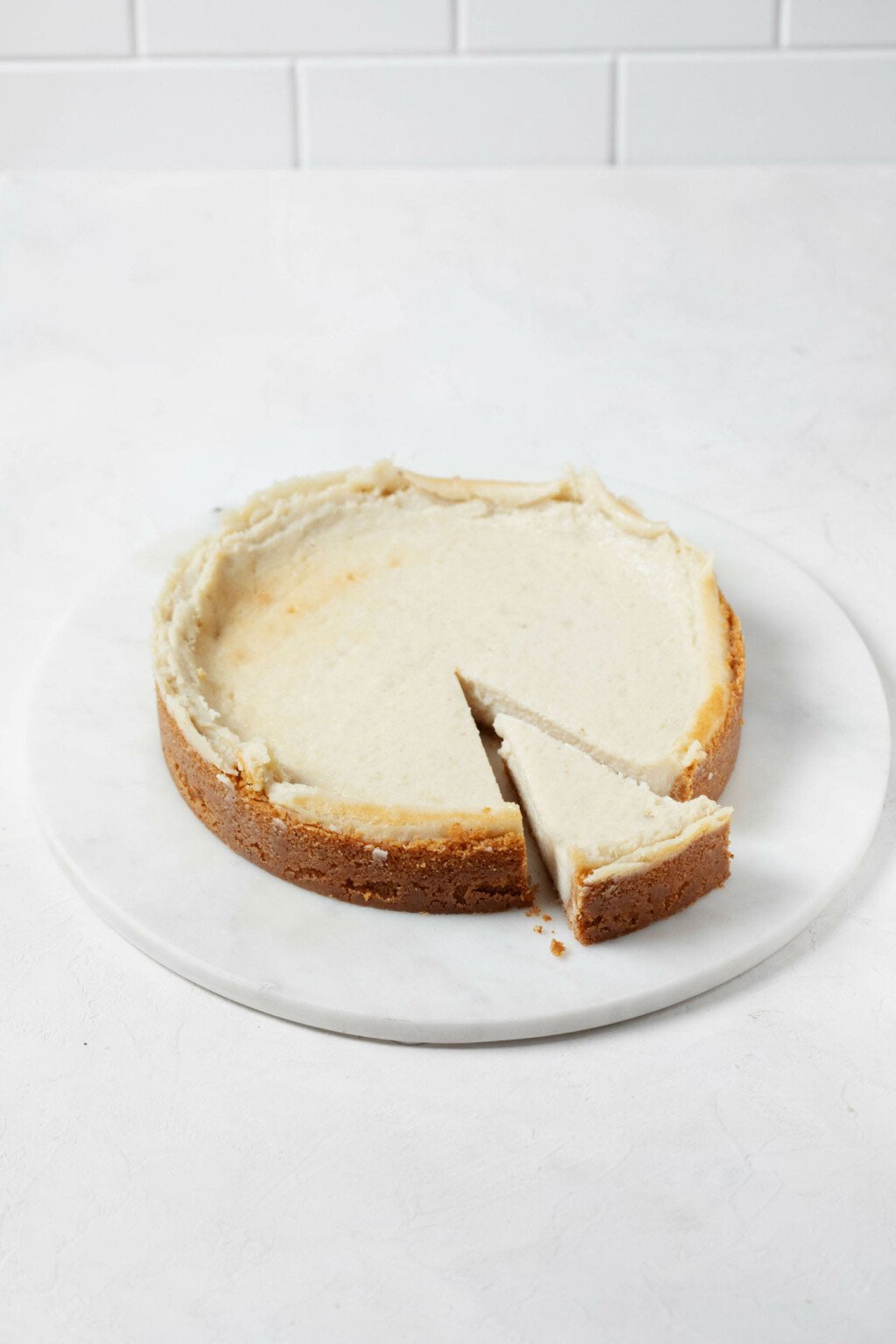
This ultra creamy, classic vegan cheesecake is a long time coming. It’s the first traditional cheesecake that I’ve shared on the blog, and it’s taken me a while to get it right.
Early in lockdown in 2020, I hopped on Instagram stories and took a poll. I asked what sort of recipes readers would like to see more of during quarantine.
Some of the answers made sense for the times: recipes featuring dry pantry staples, such as soups and stews.
People yearned for baking projects to pass the time, too. I had many requests for cookies or cake.
One answer seemed to predominate, however, and it surprised me: cheesecake.
It was the number one dessert that readers requested, by far.
Once I thought about it, the request made sense. What’s more comforting than a creamy, nostalgic slice of cheesecake, with its crumbly crust and silky interior?
The following recipe will create just that. It’s a favorite of mine, and I hope that it will come to be a favorite of yours, too.
Classic vegan cheesecake base: to cashew or not to cashew?
Cashews or no cashews? This was my first question about making a dairy-free, classic cheescake recipe.
My love of cashews in any kind of creamy-textured recipe is no secret.
I use cashew cream in pretty much everything, from soups and stews to whipped cream to pasta dishes. Not to mention my love of cashew cheese, cashew queso sauce, and even homemade cashew yogurt.
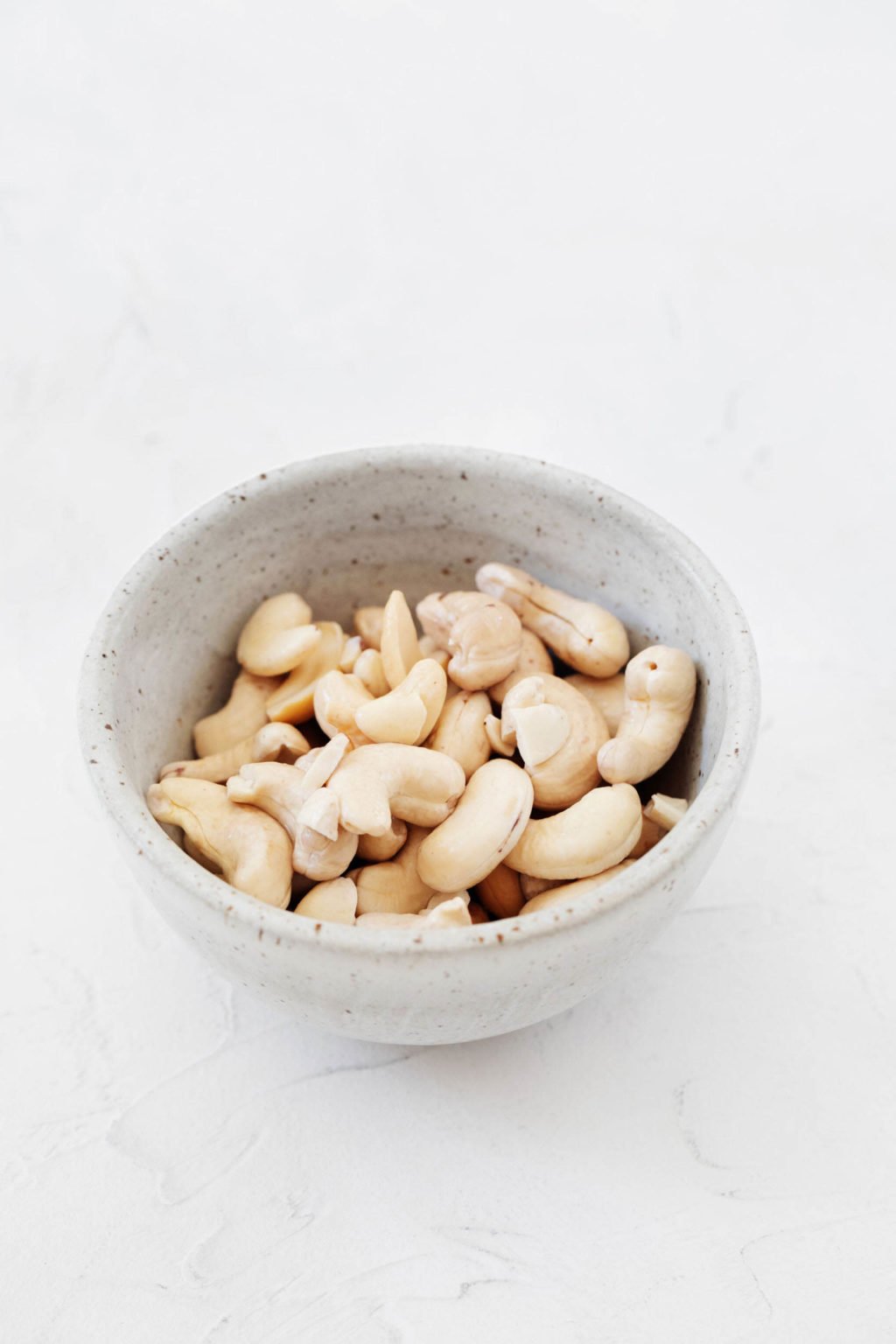
But there are nut allergies to think of. Not to mention the fact that cashews require a high speed blender or a food processor for breaking down.
I tried so many different bases for this classic vegan cheesecake. All of them involved vegan cream cheese for the characteristic flavor, along with something else.
The something else could be coconut milk, coconut cream, silken tofu, non-dairy milk + cornstarch, and vegan yogurt.
The yogurt and plant milk varieties were always a little too jiggly on the inside. Silken tofu varieties had that slight flavor of, well, silken tofu.
Not a bad thing, but not quite the cheesecake I was going for.
After all of the tinkering and testing, I found a recipe that I loved: creamy, luscious, sweet and subtly tart.
Cashews were indeed the key to that texture.
This is, therefore, a cashew and cream cheese based vegan cheesecake. If you need a nut alternative, however, I’ve got you.
Cashew substitutes in classic vegan cheesecake
In place of the cashews in this recipe, you can use one of the following:
1 can full fat coconut milk
This cheesecake will be more wobbly in the center than mine, but the flavor will be wonderful. Increase the cornstarch to 2 tablespoons if you make this substitution.
1 14-ounce container silken tofu
You may be able to taste the silken tofu in this version if you’re accustomed to knowing what silken tofu tastes like. But those who don’t use it in cooking regularly probably won’t be able to detect a big difference.
It’s a nice option for making this cheesecake a little lower in fat and richer in protein. Increase the cornstarch to 1 1/2 tablespoons if you make this version.
1 3/4 cups non-dairy yogurt of choice
A great option if you’d like to customize this for special dietary needs or food allergies. If you try this version, increase the cornstarch to 1 1/2 tablespoons.
Aim for an unsweetened or plain yogurt, so that the ratio of sweetness remains the same with the substitution.
How to make an ultra creamy vegan cheesecake
This is a stepwise recipe, but each step is very doable if you take your time and resolve to have fun with the process!
Step 1: Create the crust
This vegan cheesecake features a classic, graham-cracker style crust. This is essentially my favorite type of crust to make!
Graham cracker crusts simply involve blitzing graham crackers in a food processor and adding melted butter and some sugar. The butter makes the cracker crumbs clump together.
From there, the crust can be firmly pressed into a springform pan. No rolling pin required!
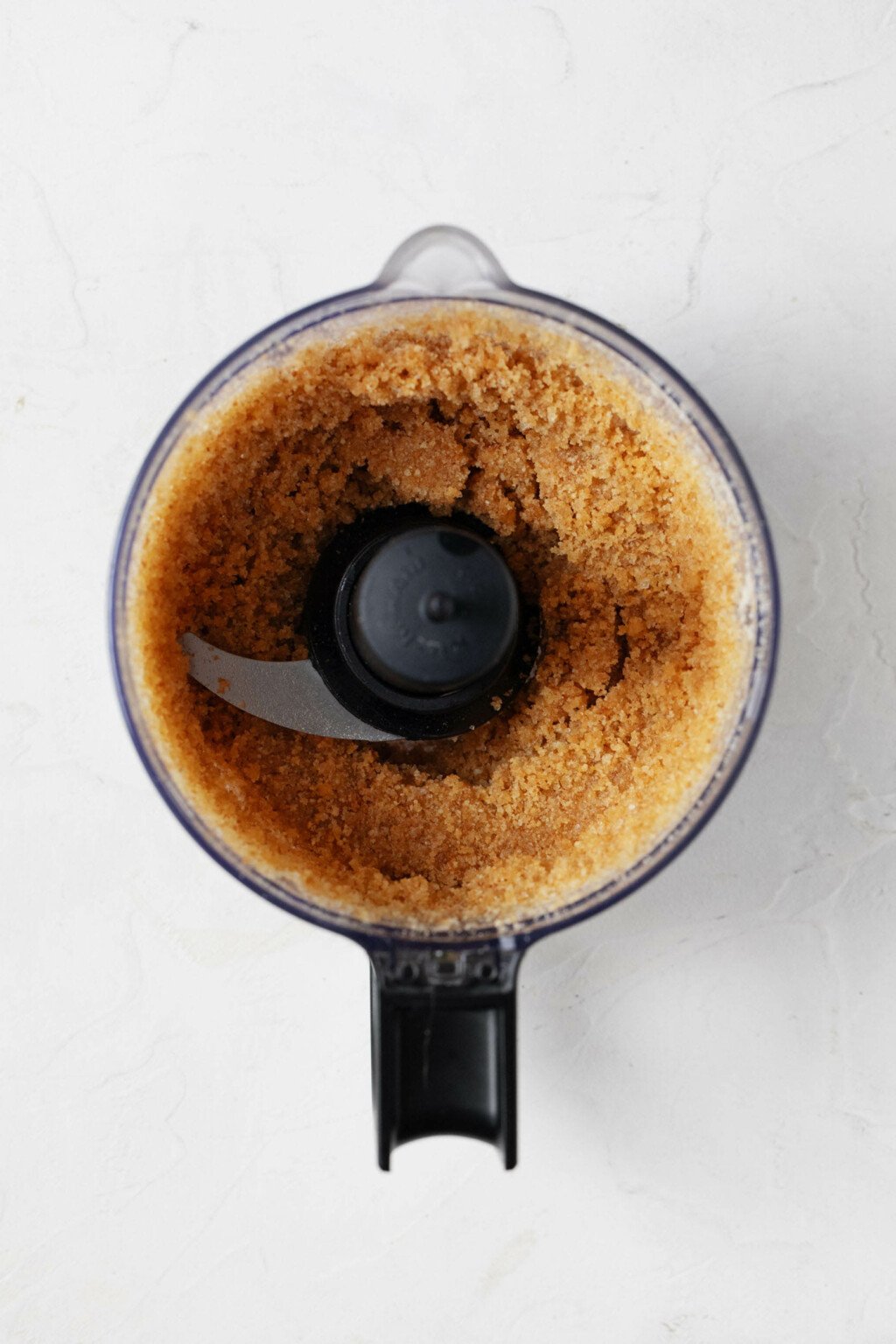
Step 2: Par-bake the crust
You’ll par-bake the crust for 8-9 minutes, or until it’s just starting to smell nutty. This helps it to retain a perfectly firm texture throughout the cheesecake-making process.
Step 3: Prepare the cheesecake filling
This step involves first processing soaked cashews, so that they turn into a rough, mealy mixture. After that, you’ll add lemon juice, vegan cream cheese, sugar, vanilla, and cornstarch.
These filling ingredients are essential for creating a vegan cheesecake with a rich, creamy, yet firm consistency.
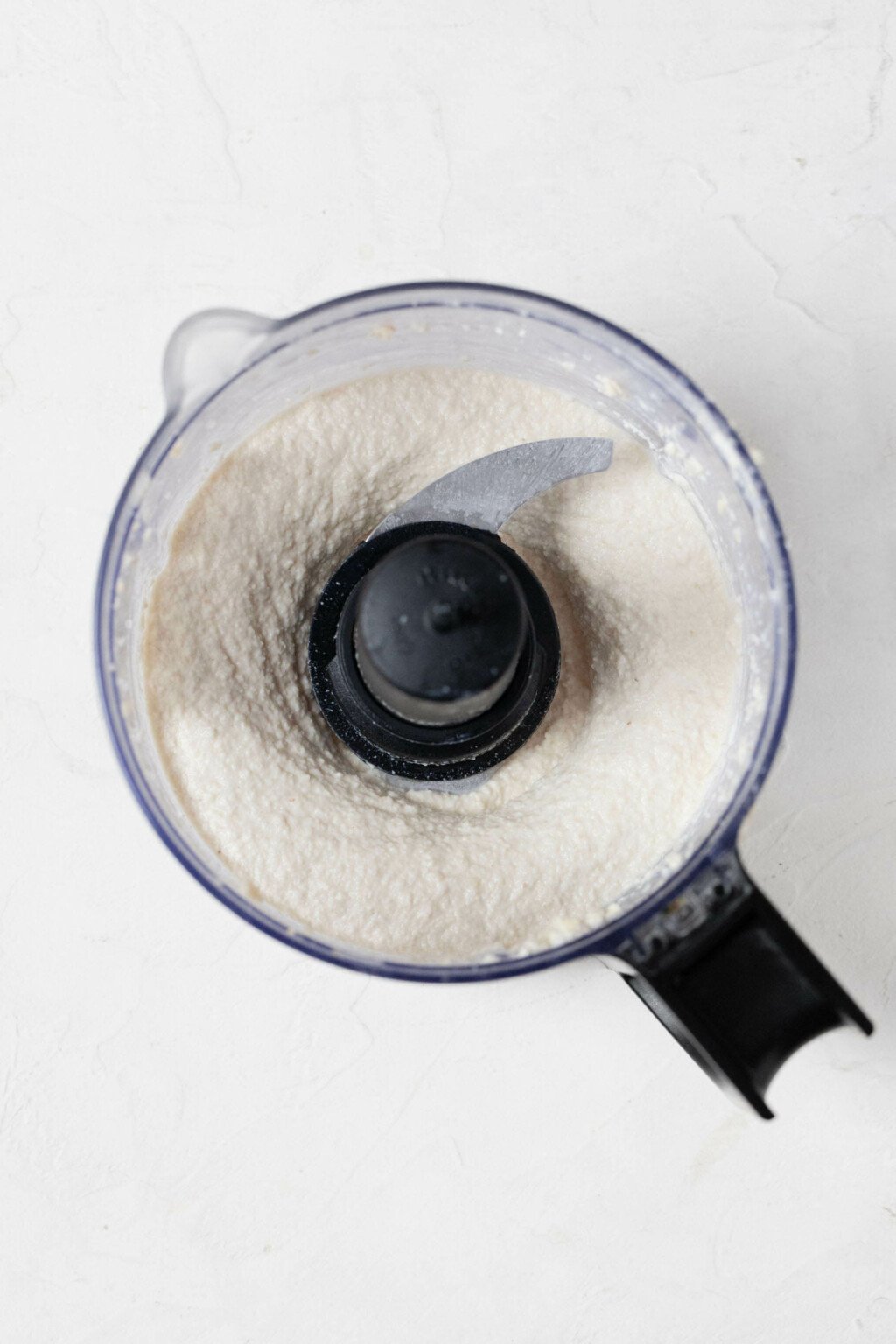
Step 4: Bake
Transfer the cheesecake batter to your prepared baking dish and bake for 40 minutes. The oven temperature for this recipe is 350°F / 175°F.
Step 5: Cool at room temperature
Right after baking, the cheesecake center will still be very wobbly. It’s important to remove the cheesecake from the oven carefully and then to cool it at room temperature for 1 hour.
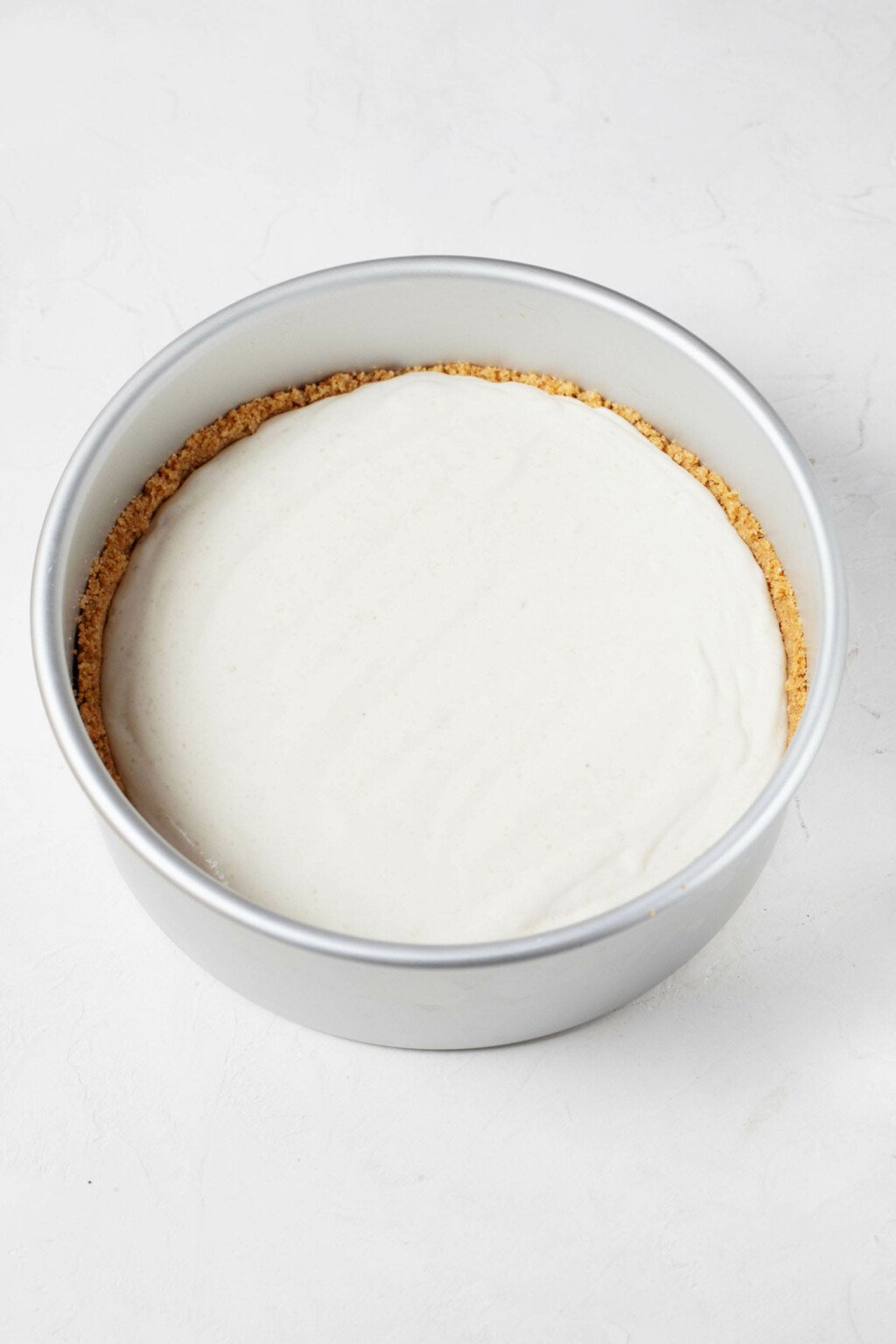
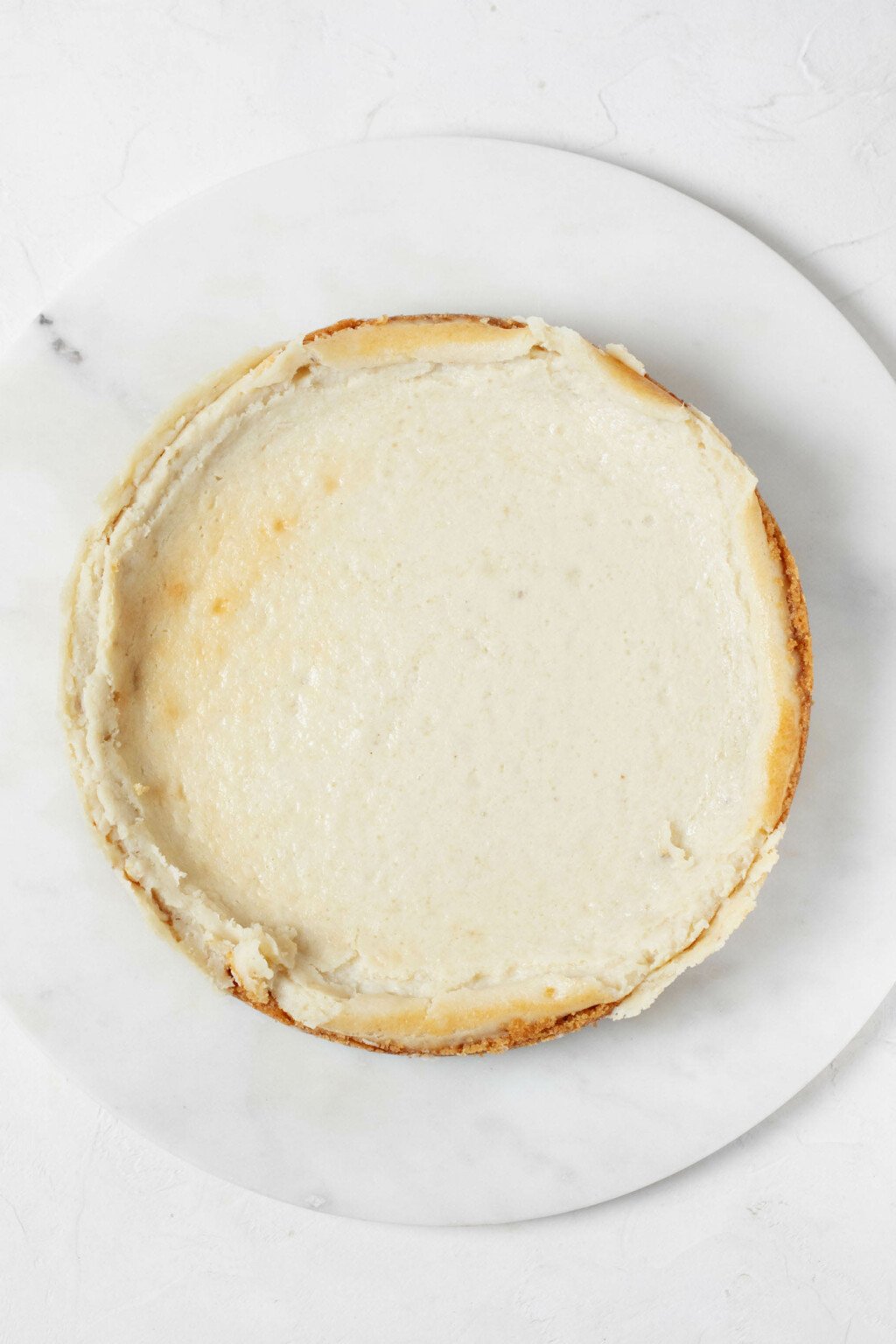
Step 6: Chill the cheesecake overnight
As hard as it may be to wait a whole 12-24 hours to enjoy your creation, this vegan cheesecake needs a solid overnight chill. This is essential for a firm, sliceable texture!
You should gently cover the top of a pan with Saran wrap, a silicone lid, or foil during chilling.
Step 7: Slice and enjoy
Now comes the truly rewarding part: slice your beautiful, smooth vegan cheesecake into slices and enjoy them, one by one.

Tips, tricks, and troubleshooting
I’ve now made this recipe enough times to know the steps that make it turn out best.
Soak your cashews beforehand
This is especially important if you’re using a food processor, which is what I use. I recommend at least 4 hours of soaking, but overnight in the fridge is fine.
If you’re in a pinch with time, you soak the cashews in boiling water instead. This way, they’ll only need 1-2 hours of soaking. Drain them completely before moving on.
Blend your cashews before adding cream cheese
The recipe calls for blending up your cashews a bit before adding the cream cheese to your food processor (or high speed blender).
You’re aiming for about the same texture as my cashew cheese, but a little less smooth. This will ensure that the cashews continue to blend easily once you add your cream cheese.
Blend to a silky smooth texture before baking
Once you add your sugar and cream cheese, allow your food processor to run a whole 2-3 minutes. You want the cheesecake batter to be silky smooth before it enters the oven.
Allow the cake to cool slowly
I learned a lot about the art of baking and cooling cheesecake as I constructed my own classic vegan cheesecake.
Namely, I learned that one is aiming for a subtle wiggle, but not a sloshy jiggle, when a traditional cheesecake is done.
I also learned that vegan cheesecake works a little differently. Normal visual cues may not be good enough indication of the cake’s doneness.
Instead, proper cooling is the trick to getting this cheesecake right. Be patient, and don’t skimp time on either the 1 hour of room temperature cooling or the overnight chill in the fridge.
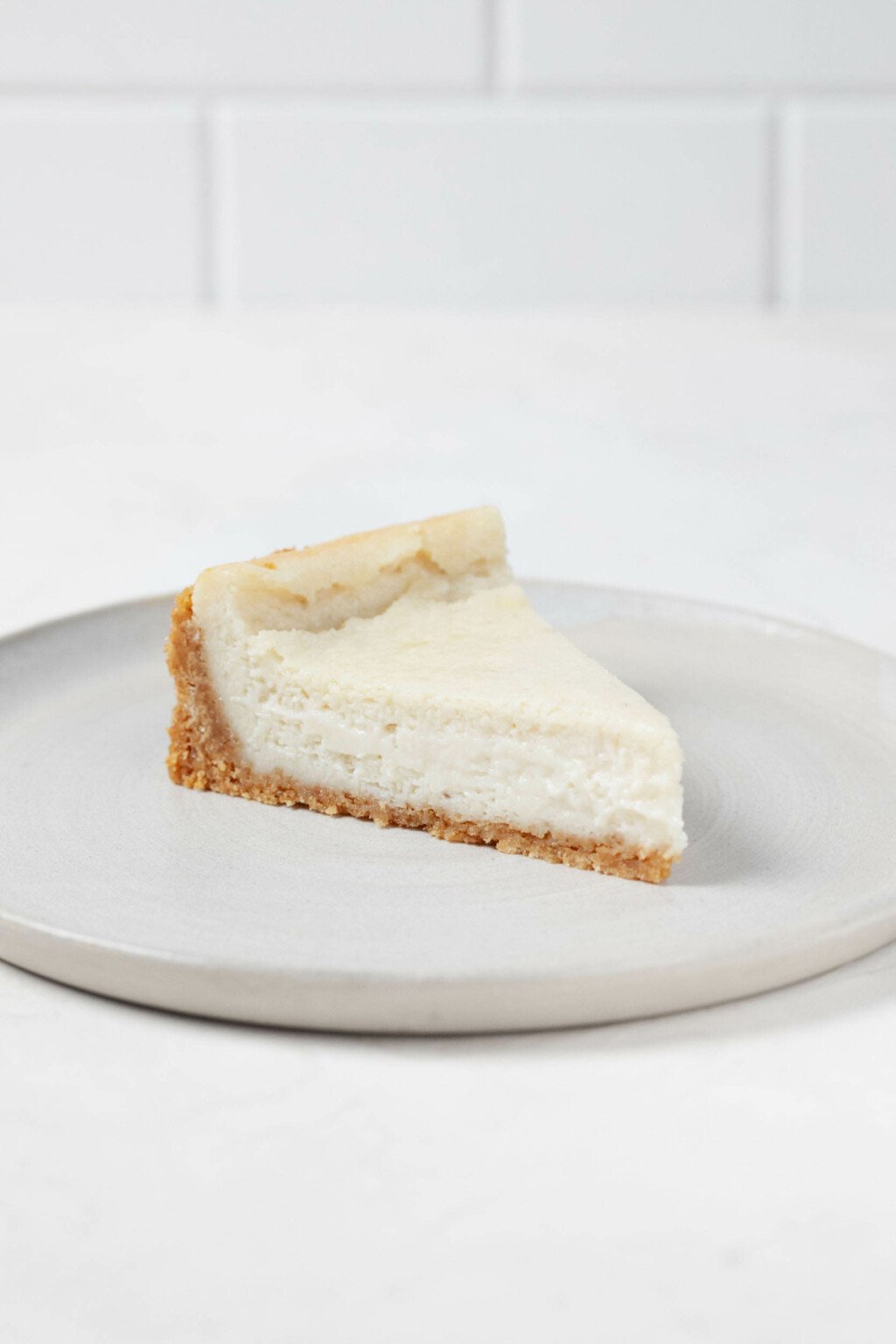
Which vegan cream cheese should I use?
This classic vegan cheesecake recipe calls for three whole containers of cream cheese, which is a lot!
The good news is that it doesn’t really matter which brand you pick. I tested Kite Hill Foods, Miyoko’s, Violife, and Tofutti. They all worked equally well.
Since three containers of cream cheese is a lot, I’d recommend Tofutti, simply because it’s usually the least expensive vegan cream cheese. But you can pick whichever brand you like, or choose the one that fits your health needs.
Ditto, by the way, with graham crackers! Here’s a list of some store-bought vegan options.
Cheesecake toppings & flourishes
This cheesecake is what it claims to be: a classic vegan cheesecake. You don’t have to give it a bunch of interesting toppings or add any sauces or flourishes if you don’t wish to.
I liked adding a simple vegan blueberry lemon sauce to my cheesecake, because a) blueberries are still in season near me, and b) I love the pop of color and the tart flavor.
I’m including that sauce, which could be made with berries or plums or peaches or apples, too, in the recipe.
Other fun classic vegan cheesecake toppings could be melted dark chocolate, chocolate shavings, vegan salted date caramel sauce, or fresh berries.
But really, this vegan cheesecake is rich enough that it doesn’t need too much adornment. You do you.
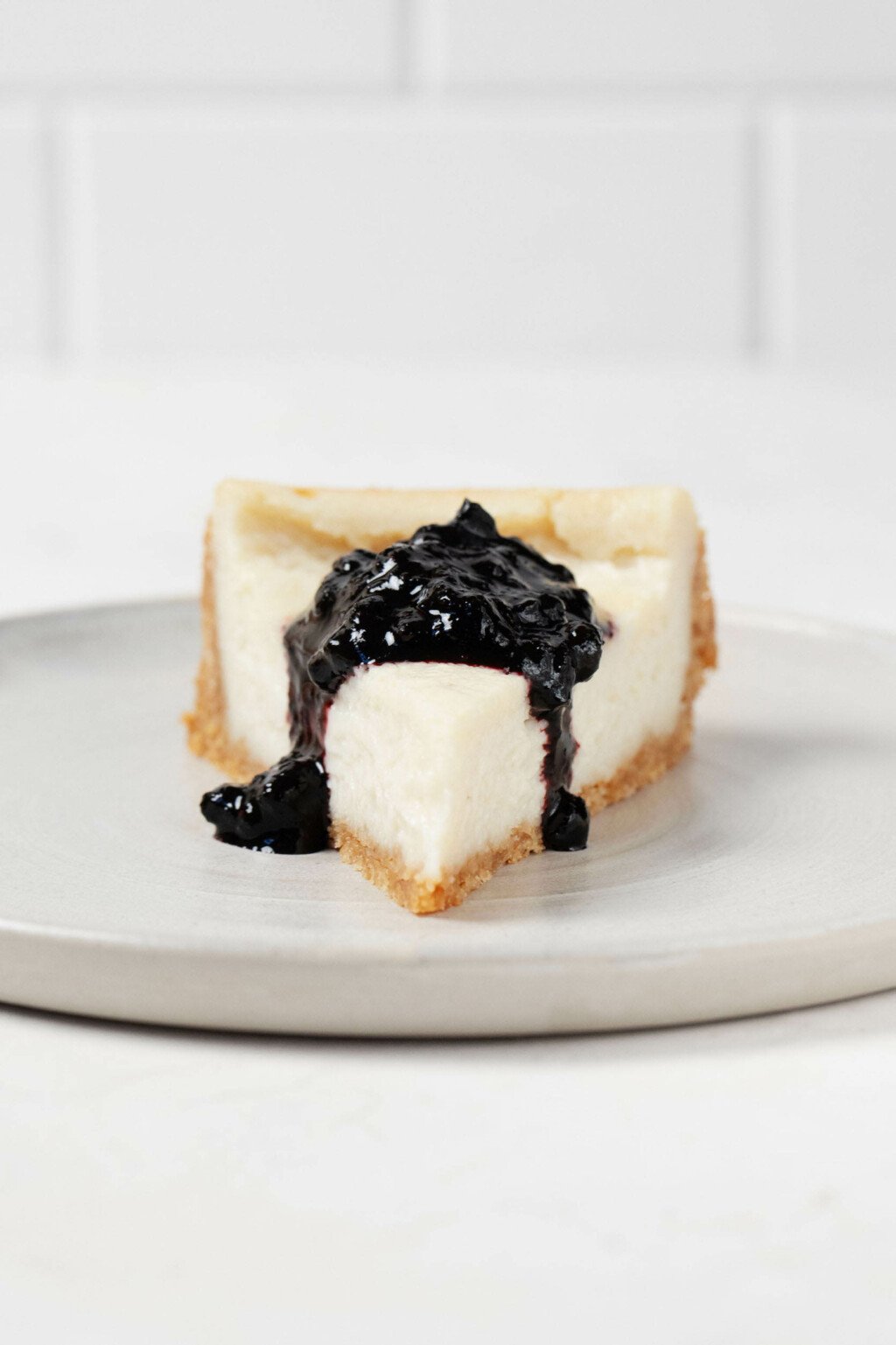
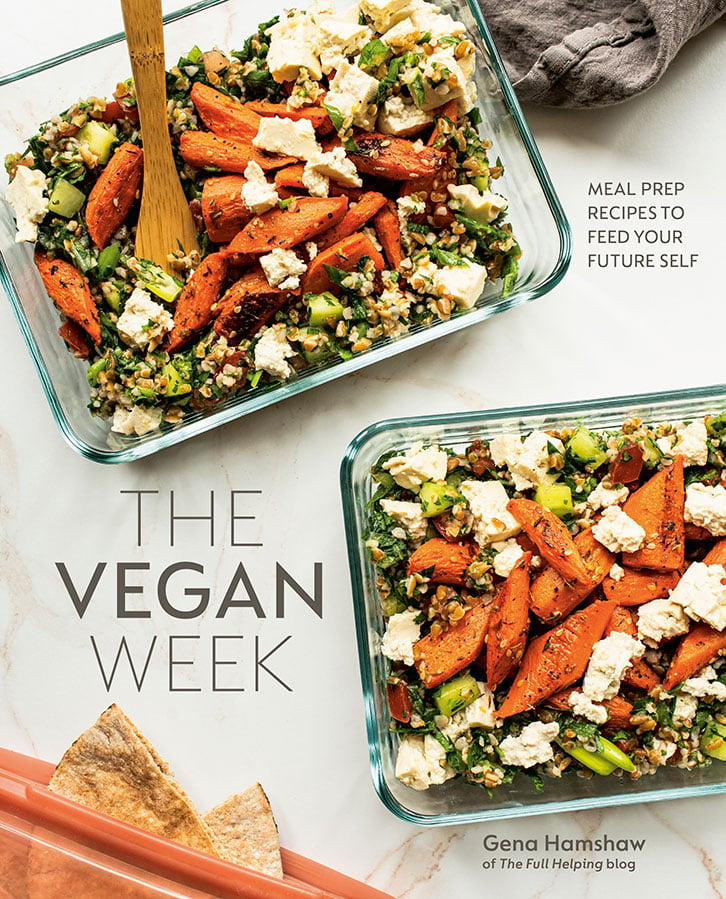
The Vegan Week
Embrace the joy of eating homemade food every day with the hearty and wholesome recipes in The Vegan Week.
Whether you have three, two, or even just one hour of time to spare, The Vegan Week will show you how to batch cook varied, colorful, and comforting dishes over the weekend.
Meal prep & storage
Once in the fridge, the cheesecake can sit for 2-3 whole days before slicing and serving. This makes it a great dessert to make ahead and serve when you’re ready!
Baked and cooled cheesecake can be frozen for up to 8 weeks. Defrost entirely in the fridge before slicing and enjoying.
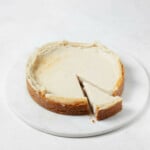
Ultra Creamy Classic Vegan Cheesecake
Author –Ingredients
For the crust
- 8 sheets vegan graham crackers (125 g)
- 1/4 cup cane sugar (50g)
- 5 tablespoons vegan butter, melted (70g)
For the cake
- 1 cup whole unroasted cashews, soaked for at least 2 hours and drained (135g)
- 3 tablespoons water
- 3 tablespoons freshly squeezed lemon juice
- 24 ounces vegan cream cheese of choice (680g; 3 8-ounce/225g containers)
- 1 cup + 2 tablespoons cane sugar (220g)
- 2 teaspoons vanilla extract
- 1 tablespoon cornstarch (8g)
Optional blueberry lemon sauce
- 1 pint blueberries (about 1 1/2-2 cups)
- 2 tablespoons cane sugar
- 2 tablespoons freshly squeezed lemon juice
- zest of 1 lemon
- 1/4 cup water (60ml)
Instructions
- Preheat your oven to 350. Grease with vegan butter or lightly oil an 8 or 9 inch round cake or cheesecake pan with a removable bottom. Line the bottom of the pan with a round piece of parchment.
- To prepare the graham cracker crust: place the graham crackers and sugar into a food processor fitted with the S blade. Process for about 20 seconds, or until the crackers are turning into crumbs. Drizzle in the melted butter and continue processing for about a minute. The crust is ready when a small amount will stick together when you squeeze it in the palm of your hand.
- Remove the blade from the processor and pour the crumbs into your prepared pan. Use the back of a measuring cup or a regular cup to smooth it out over the bottom and to the sides. You can use some pressure here! Pack the mixture down till it's smooth, solid, and even.
- Transfer the baking pan to the oven and bake the graham cracker crust for 8-9 minutes, or until just starting to smell nutty. Remove the pan and set it and the pre-baked crust aside.
- Clean and dry your food processor. Place the cashews into the food processor (fitted with the S blade). Alternately, use a high speed blender, such as a Vitamix. Add the three tablespoons of water. Cover the processor and pulse a few times. Run the processor for about 1 minute, until the cashews are broken down. Use a spatula to scrape the sides of the processor, then continue processing for another 2-3 minutes. The cashews should become relative smooth and blend without effort. Keep scraping the processor sides down if needed.
- Add the lemon juice, cream cheese, sugar, vanilla, and cornstarch to the processor. Process for 3-4 minutes, or until you have a completely smooth mixture. You can stop and scrape down the side of the processor as needed. You'll have a smooth, thick mixture: pourable, but not runny, and it'll coat a spoon or spatula.
- Transfer the cheesecake batter to your prepared, round baking pan. Transfer to the oven. Bake for 40 minutes.
- Remove the cheesecake from the oven carefully. At this point, the center will still be very, very jiggly! It'll firm up during cooling. Allow the cheesecake to cool in a cool place for about 1 hour. Then, gently cover the top of the pan and transfer the cheesecake to your fridge. Chill the cheesecake overnight.
- To make the blueberry sauce, place all ingredients in a saucepan over medium heat. When the mixture becomes bubbly, reduce the heat to low. Simmer, uncovered, for 10 minutes. Allow the sauce to cool before enjoying.
- To serve, slice the cheesecake and top it as desired. Enjoy!
Notes
Cheesecake isn’t a quick and easy recipe: it takes a lot of time, if you take into account the cooling/chilling.
But some things are worth waiting for. This creamy vegan cheesecake is worth the wait. Trust me.
xo
This post may contain affiliate links. If you use these links to buy something I may earn a commission. Visit my privacy policy to learn more.

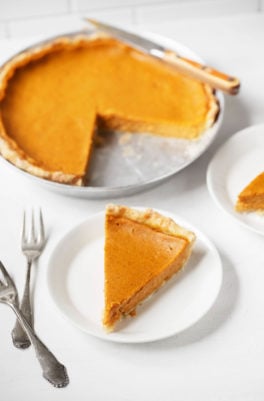
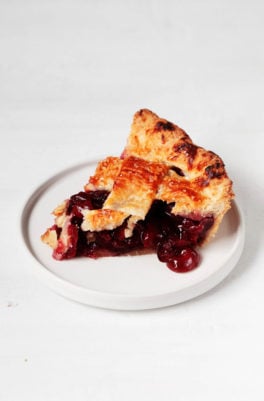
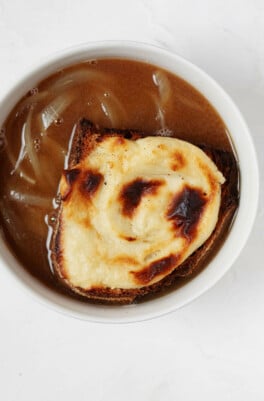
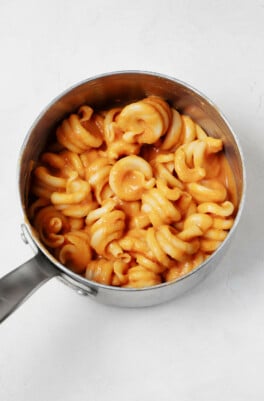
Leave a Comment
I make Cheesecake every Christmas and have for decades. I use the recipe from Dear Abby except Gluten free crust, everyone LOVES my cheesecake. Last year my daughter’s girlfriend who is vegan came for Christmas dinner and I made 2. One regular and this recipe using the cashews and tofutti cream cheese. It was absolutely delicious! We had a blind taste test and everyone liked the vegan one better, including me! This year I am only making this one. Thanks for tinkering enough to make the perfect vegan version!
So disappointed of the waste of time and products this was. I replaced the cashews with silken tofu as instructed and the cheesecake came out awfully greasy and it just was horrible. Where did all the oil come from anyway??? I’m sad :/
Hi Tinna,
I’m so sorry to hear that you had these results, and I can understand the disappointment. It’s really frustrating to invest time and effort and money into a recipe that doesn’t work out. I think the greasy quality could have something to do with the cream cheese—they do typically use some oil in those products. I’m going to re-test a silken tofu version at some point so that I can can better ensure that the modification works, which I know doesn’t make up for your experience. Thanks for sharing how it went for you, as it’ll help me to improve the recipe.
G
I made the cheesecake and it turned out fine aesthetically, picture perfect not too toot my own horn! I made your recipe exactly but added a tablespoon of lemon zest and 3/4 of the filling to 6 inch pan. It really looked like a regular cheesecake and not compact like most vegan cheesecakes. I’d like to know the internal temp of the cake when it’s done because I cooked it at 350 for 50 minutes and took it out when it registered 150 with a thermometer like a traditional cheesecake but was told it was still kind of soggy on the inside like custard.
Hi there! So glad it was more of a success this time. Still not sure about the texture question because I haven’t had that result, but next time I make it I’ll get the internal temp. But I do think in the case of this dessert the overnight chill is even more important than oven temp/baking time—though both matter.
The texture was probably fine. Some people like a soft and creamy cheesecake, some like light and fluffy, and some like firm and dense. I think one of the parties was in the latter group. I personally prefer soft and creamy. I find that the texture of the cake also depends on how long you leave it at room temperature. Yes, please let me know the internal temp.
Thank you for this recipe. I will be making it again for myself in the near future and I’ll report back.
Do all the ingredients for this recipe have to be at room temp?
Not that I’m aware of, Chris!
I made this today and it didn’t turn out right.:( I don’t know what happened. I blended it just right. The consistency of the filling held to the back of spoon but it came out of the oven looking like a thin, soupy porridge.
I did halve the recipe for a 6 inch pan. Maybe not adding all of the cornstarch affected it? I also forgot to add vanilla bean paste and added it at the last minute, but I don’t think that changed the consistency of the filling. *I used Daiya’s vegan cream cheese.
Hi Chris, I’m sorry to hear that it didn’t work out! I think it’s possible that one of two things affected it—first, changing the quantity of cornstarch to scale the recipe. Second, I haven’t tried Daiya’s cream cheese in the recipe specifically (have tried Violife, Tofutti, Kite Hill), so there is a also a small chance that the Daiya works differently. If I have a chance to try that one myself, I’ll report back 🙂
Luckily, Daiya sent me two free coupons to try again. I’m going to try one with Miyoko’s brand and one with Daiya’s brand in the future with the added 3 tbsp of cornstarch and see how it turns out. Thank you.
Oh, good! OK, I will look forward to hearing how it turns out. Also, remember that the overnight set is absolutely key—it will not be set enough right after baking. Hope it turns out this time.
I cannot over state how pleased I was with this recipe. I made it for my vegan-curious boyfriend’s birthday. Cheesecake has always been his favorite dessert and he was really excited to try a vegan version. We were not disappointed!
I used Tofutti cream cheese and prepared the recipe with my food processor. I was worried the cashews wouldn’t get as smooth, but there was no issue. I got them chopped up as small as I could, and then when I added the cream cheese and other ingredients, they melted right in. My guess is that soaking the cashews (which I did by boiling water, then pouring it on the cashews and soaking for 2 hours) was essential to make that happen.
I was also worried this would taste a lot like Tofutti, which I find can be a little plastic-y. That, again, was not an issue. The flavor is delicate, rich, and with just the hint of tartness, like non-vegan cheesecake. And the texture was wonderful. I think the combo of cashews and vegan cream cheese is genius here. It’s got the substance and richness of cashews with the silkiness of cream cheese.
I’m looking forward to making this recipe for more special occasions! Thank you Gena. I was worried about how my first vegan cheesecake would turn out, but I knew you would not let me down!
Hi Teresa,
I’ve made this recipe with Tofutti many times, and I agree, it doesn’t taste very much like Tofutti (or plastic-like) at all! I love this recipe and love cheesecake, so I am very glad to hear that you also had success with it and that you and your boyfriend enjoyed 🙂
G
A great recipe! My daughter and I made it and it came out great!
Since we don’t have blueberries at this time of the year where i live (Israel), so I used strawberries and added a bit more sugar, and it worked well.
Thanks!
So glad to hear that it turned out, Rafi!
Look no further for a vegan cheesecake recipe, this one is perfect! I used coconut sugar in the crust because I was running low on granulated and wanted to save that for the filling. It worked really well. I also decided to do a key lime variation. I subbed 1/4 cup lime juice for the lemon juice and water and added the zest of 3 limes to the filling while it was in the blender. I used Tofutti cream cheese because it’s by far the least expensive one, and I would definitely use it again. I refrigerated the cheesecake for 8 hours before eating and it held together just fine when I cut into it, but I bet it would be even better if you refrigerated for a bit longer like the recipe calls for. Plan ahead when you make this! Can’t wait to make it again with different flavors and toppings.
I am super excited about this!! Thank you so much!
Looks beautiful and yummy! Here’s to slow living and slow food. xo
Hi Gena,
I’m super excited to make this! Cheesecake is my favorite food and , while I’m No longer vegan, I often eat as a vegan due to a myriad of health issues.
Two questions:
-Is there a sugar sub you would recommend? I’m a type-1 diabetic.
-I have IBS and can only tolerate a minimal amount of cashews at one time. Will the soaking help minimize the gas buildup?
Thank you!
Hi Danielle!
I think soaking the cashews, plus the amount, will be OK. It ends up being 1/3 oz per slice for 12 slices, even less for 14 slices—that’s not too much.
As for sweetener, I’m honestly not sure! The sugar adds sweetness but also affects moisture and texture, and I would hate to give you bad guidance. I’m sure there are some good guidelines for using sugar free sweeteners for T1DM—if you have a method that usually works for you, or which you’ve had success with in baking, I would love to hear how it turns out!